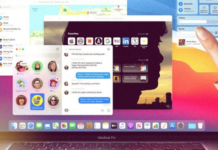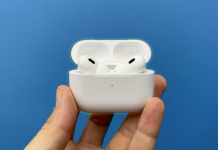In a market like that of true-wireless headphones, which has literally exploded over the last two or three years, making a product that can somehow stand out for its ability to offer high-level performance at a price that is all in all adequate is not absolutely simple. Huawei’s new FreeBuds Pro 2 go exactly in this direction and, thanks also to the collaboration with Devialet (with whom it has also developed Sound X and Sound Joy), they are probably one of the best alternatives, if not the best, that you can currently find on the market.
Small, light, comfortable, with a very good noise cancellation (considering the type of product) and a quality in music reproduction difficult to find in other solutions, even at the same price. In short, the ingredients for a couple of true-wireless absolute level are all there, will it be enough to beat the competition?
DESIGN, ERGONOMICS AND MATERIALS
The FreeBuds Pro 2 have been reduced in size compared to the previous model. In particular, the stem has been shortened, details that make them seem a little more squat than the previous ones and potentially more complicated to control with touch controls. The lower thickness, on the other hand, is certainly a plus point and helps to move the center of gravity further towards the inside of the ear. In this way you gain in stability, even in the most complicated situations.
In this regard, when it comes to inserting the earphones into the ear, the new FreeBuds Pro 2 require very few adjustments, unlike the Sony WF-1000XM4 which are too heavy and protruding, and like Apple’s AirPods Pro, the only other in-ear that I can withstand besides these new Huawei.
The only moment in which I did not feel them exactly firm inside the ear was during a running session, also thanks to the sweat I had to fix them 4-5 times within an hour. Apart from that, however, for daily use they are excellent, comfortable and light. In the package we find three rubber pads of different sizes that allow us to best adapt them to our ear; in the Ai Life app you will also find a test that allows you to check the adaptation of the earphones.
Compared to the previous model Huawei has then added resistance to water splashes and now the headphones are IP54 certified.
Moving on to the less important features, the FreeBuds Pro 2 are available in three colors. What you see in our photos is the so-called Silver Blue, but on the Huawei store you can also find the classic Ceramic White (very AirPods style) or the Silver Frost.
Just then spend a few words also about the case. Obviously it offers a USB-C on the bottom, useful for charging, flanked by a small LED that testifies to the state of the charge of the case. On the right side we then have a physical button useful to activate bluetooth pairing, while opening the cover we find a second status LED useful for verifying the activation of Bluetooth and the connection to the different devices.
As for the size we are halfway between the case of the SONY WF-1000XM4 and that of apple’s AirPods Pro. It weighs exactly 55g, which is not little but still remains a weight that will not bother you in your pocket.
TOUCH CONTROLS
As with the previous model, the new FreeBuds Pro 2 offer touch controls that can be activated by swiping or pinching the sticks. I already mentioned above that at first glance I was afraid that the small size of these rods could make the interaction complicated. Actually it is not so, indeed, after familiarizing yourself with the position of the controls command these FreeBuds Pro 2 is still quite simple, although I still prefer the classic touches.
Through the application you can customize the actions that the headphones perform when you pinch them once, two or three times, or if you hold them down for a couple of seconds. By default a single press starts and pauses the playback of the songs, the double press switches to the next song and pressing three times returns to the previous song. On the call, on the other hand, a single press starts and ends the call while a double press rejects it. Finally, the continuous pressure is used to switch from one noise suppression mode to another while the swipe on the stem raises or lowers the volume.
































